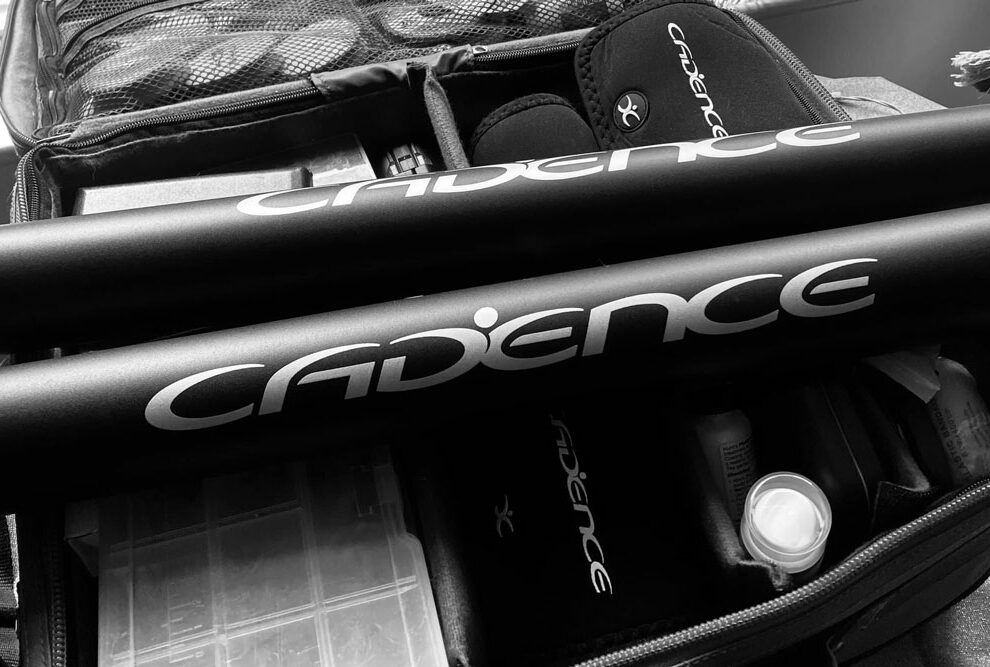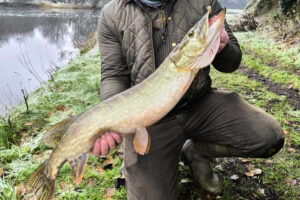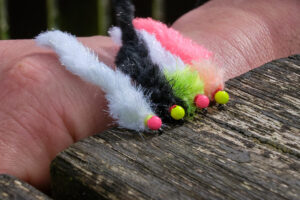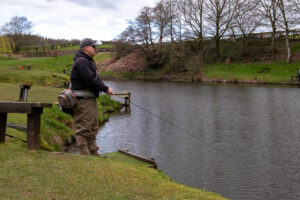“To become a decent fly fisher, you need to be able to cast son.” I was told this many years ago by my late father, George, who was a fanatical fly angler.
He taught me the basics of fly casting when I was young. I remember spending endless hours practising, striving to get as capable as possible. Da had me casting a glass 6ft fly rod which he had made from a small spinning rod by converting the handle and guides. The challenge was to land the fly, as he called it, which was a piece of my mums red knitting wool into an old tin bucket. He said only until I could cast a bit was I allowed to go fly fishing with the grownups.
My father was a product of his place and time, a man you would rather not upset. Therefore, I played along with his casting games, which took place on a girl’s school hockey pitch which was conveniently at the back of our old house. Fly casting for me started with getting the occasional strange look or wisecrack from the other kids and dog walkers that used the pitch. However, what did I care about what the other kids thought – “Fly fishing is a glorious pursuit” – I had heard my old man say to Mr Hanna, the Scots man who lived at the top of our street, so I had to do it. At least that is how it seemed to me in my young six or seven year old mind.
Casting practice is a thing all fly anglers need to do, regardless of what age we take up fly fishing because it takes a bit of practice. Looking back, I guess my old dad did not like the notion of pulling a barbed Greenwell’s Glory out of a squealing child’s lug miles from home! When he just wanted to fly fish himself and get his head showered, as we say here, when we want a bit of headspace.
Removing a fly from my ear would certainly not have fazed him, he carried all sorts in his old tackle bag, including tobacco tins full of wee deadly flies, pliers, a Swiss army knife, scissors, plasters, a tube of Germolene, a brass priest and heaven knows what else – I am in no doubt that he would have performed bank side surgery well.
As a result, in my early days fishing, I would be left to fish with bait, while da would fly fish a stretch close by. I enjoyed this, though I really wanted to fly fish, besides, fly casting is fun and even beautiful when done well. Importantly, the men on the BCT Angling Club bus, which we got every Sunday to the wonderful Ballinderry River, all fly fished.
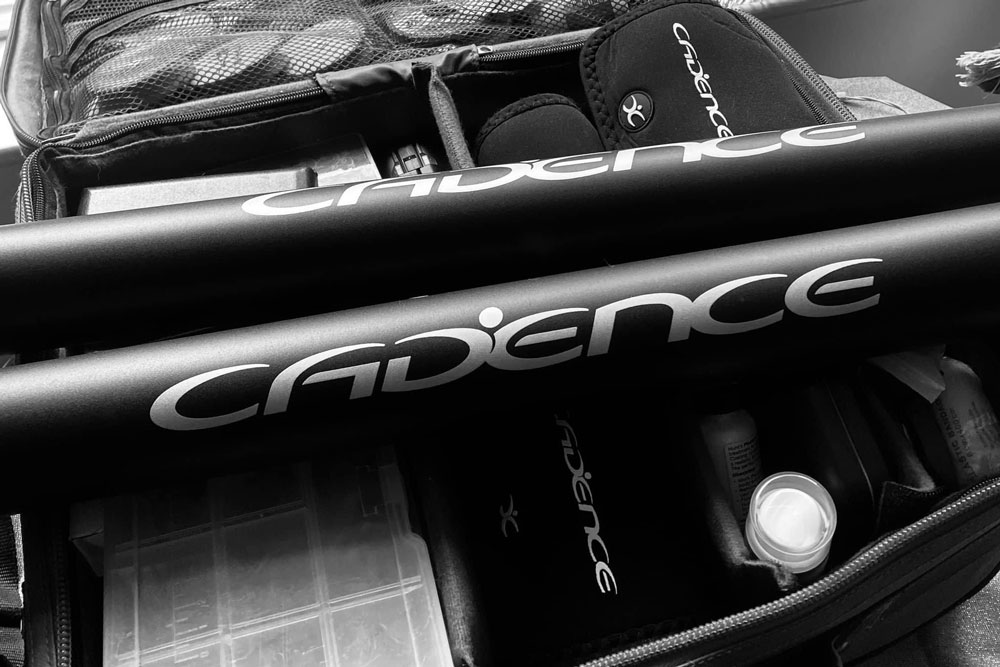
So, for me, fly fishing was all part of growing up. At the time, anglers cut a bit of a dash in their Harris tweed hats and waxed cotton jackets, smoking pipes, cigarettes and swigging bottles of Red Heart stout on the way home. This all had a certain attraction to a boy in the 1970s, as did getting out of Belfast and into the surrounding countryside.
Fifty years later, I now help people to get better at fly fishing and casting and hope that they will love the outdoors and our wonderful passion. Do not let your pride stop you from taking a few casting lessons from a qualified coach, it does pay off. There are many first-class instructors all over the world that will be only too glad to help and are easy to find with Google today.
Although I was casting from a boy, I took quite a few lessons when I was sitting instructor courses, it helped me massively with my fishing and guiding. I picked so much up from some greats, including my mentor and friend Joe Stitt, plus many others over the years. Most casts depend on your situation, as there are times you may need to haul to get distance or cast into a wind or Spey cast if you have no room to overhead cast. So, once you can cast a bit, here are a few of my top tips for fly fishing that will increase your catch rate.
1 Be Silent
In pole position is simply try to be as silent as possible and walk softly. Fish are as sensitive to noise and vibration as they are to visual warnings. Walking lightly on the riverbanks and trying to wade slowly and quietly are critical tactics. While fishing on Stillwater’s or loughs, noisy or rocking boats also scare fish. Remember, you are trying to fool a wild animal, so be stealthy. This elementary point is often overlooked and is one that will improve your catch rate and fishing massively.
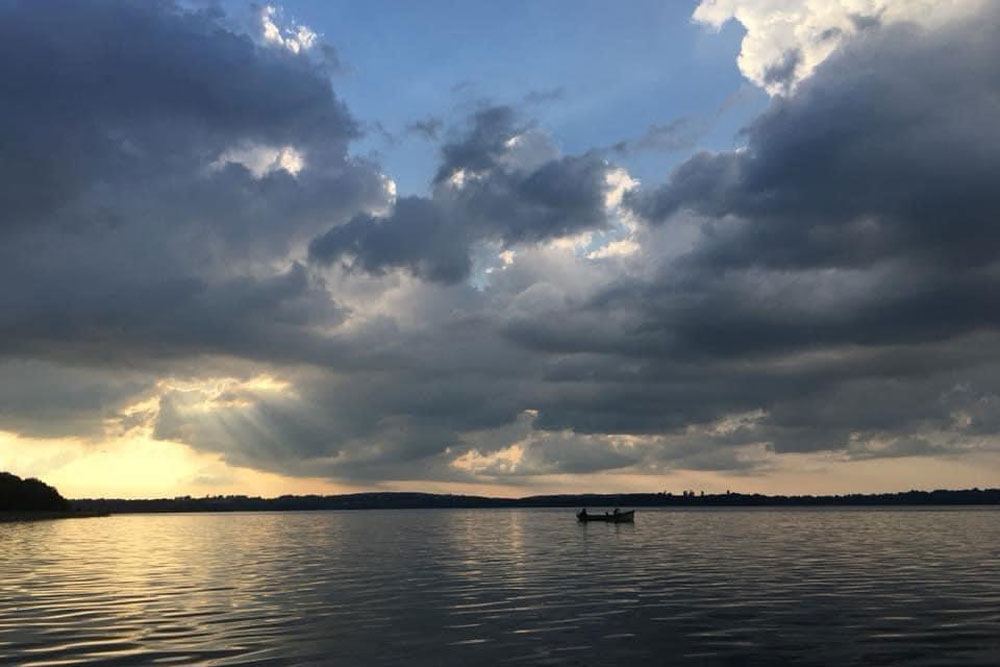
2 Match the Hatch
Establish what insects are in or on the water. If you can see what the most abundant insect on the river or lake is, that’s normally a good indication of what your quarry is eating.
However, this is not always the case as it could be at a time of the year when the trout are feeding on fry or small fish, or possibly being selective, perhaps picking out a certain insect sometimes even at a stage of its life cycle for instance an emerging fly.
That said, if you can match the hatch and discover what the trout are eating and try to copy it, you will certainly do much better. There are many books and information on the internet now to help you with this.
I remember as a youth looking at an excellent book Trout Fly Recognition by the late great English fly fisher John Goddard and this really aided me. I was lucky enough to meet Goddard in later life and tell him how his book helped, he was a gentleman and a legend to many in fly fishing. Size of fly is important at times and although my favourite type of fishing is dry fly fishing, we must also consider subsurface for trout, especially if you’re a numbers man. At least two-thirds of the diet of trout is taken under the water, not on it. Even if you prefer dry fly fishing like me, knowing what nymphs, larvae, pupa, and crustaceans are available beneath the surface will help you decide on fly selection.
3 Leader Length
When learning to cast 9′ leaders are perhaps the standard. As your technique improves, some situations can often call for longer leaders. For example, when fishing dry flies on Stillwater’s, loughs and rivers or wet fly fishing from a boat, you may need 12 to as much as 20 feet or longer at times.
That said, at times, a shorter leader is also useful, as on rivers when fishing streamers this often requires no more than 4 to 8 feet and shorter leaders make casting heavy flies easier. Besides, when you’re using a sinking line on a river, it often pays to get your flies down at a similar speed. So, experiment with your leader length from time to time. Use tapered leaders, I like the Varivas Leaders with an O ring then a length of leader attached to the fly when dry fly fishing.
You can also make your leaders by stepping down in breaking strain. The famous Hotelier Charles Ritz published, in his Classic book A Fly Fishers Life, his 60-20-20 leader formula. Ritz proposed that leaders should be composed of a 60% thick-level butt section, 20% of a rapidly tapering mid-section and 20% of a fine tip section, generic, however very workable. To this day, I remember my father making his leaders the Charles Ritz way before a fishing trip and winding his casts and carefully putting them into his old tippet wallet, ready for the next piscatorial adventure.
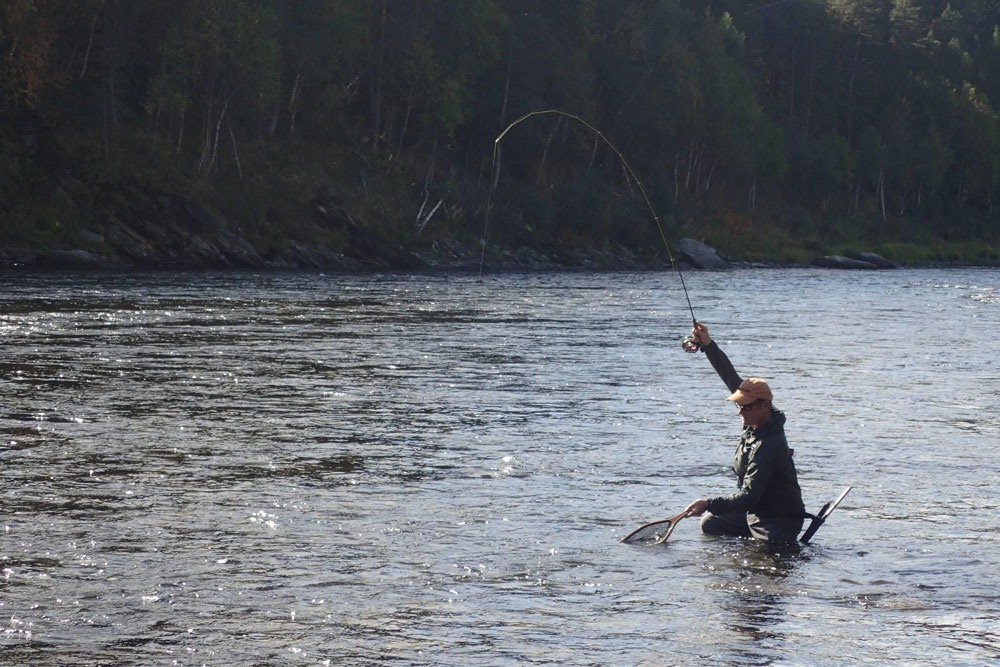
4 Start Close
On large rivers and stillwaters, when fishing from the bank, always fish the close water first. I watched trout behaviour for years, and a lot of feeding often takes part in the margins around structure. This can be close to rocks near bankside vegetation and beside and above weed beds. All which supply food and cover for the trout.
A regular mistake is to cast over fish in the excitement of making a long cast, think first. Lots of fish are caught with quite short casts a lot of the time. On occasions, we do need to cast long, but often short casts catch the fish. It’s also a lot easier to set the hook with a well-timed lift, especially when fishing a dry fly or emerger pattern.
Casting long, however, can be a tactic on larger rivers and, at times, small rainbow trout fisheries if they are busy and many fish are being returned on catch and release tickets. Trout soon learn where the safer water is, this is when learning casts like the double haul and slipping line tactics can really be an advantage. If you are a Stillwater angler, have a look at the Cadence 9’ 6’, 9’9’ and 10’ rods there will be something that suite your needs for sure.
5 Avoid Being Broken
Something to consider some anglers use far too stiff a rod and don’t let the fish run while playing them, this can result in a hook pulling out or worse straightening. Playing a good fish takes practice, the trick being to remain firm but not overly. Practice keeping your rod at a 45-degree or slightly lesser, so you are playing the fish with most of the rod and not just the tip. When you think about it, a fly rod is a flexible lever or spring and acts as a shock absorber whilst hooking and playing fish.
Many anglers complain about this, and I must admit it’s happened to me a few times in my fishing life. I could tell you some great stories about ‘the one that got away’ during some of my times fishing and guiding in different places in the world, I’ve even seen a guy once lose a fly line to a fish in British Columbia a bad backing knot perhaps the blame.
One smash from a big fish that does come to mind was on an evening many years ago on Lough Sheelin, which, of course, is one of Irelands great limestone loughs and is a special place to me as I have fished her every year for over 30 years. A place filled with many golden memories of great characters and large trout, though it’s never been an easy lough. I once heard a local say “Sheelin does not give her babbies up easy” and he was right. At times, it can drive sane men mad and mad men madder, as I guess many wild fishing places do.
On this particular evening I was in a boat with my old fishing comrade Bobby Bryans, we had been waiting for the spent gnat mayfly to fall onto the water up at Church Island. However, it was a cold night and the spinners did not leave the safety of the trees en masse with only a few doing their mating dance to fall to the water and lay eggs and die or if you’re a male mayfly, dance hump and die, I guess there are worse ways to go. It is not going to happen, Bobby said, and I knew he was right. I had found out years before that Bobby was normally right when it came to fishing, and I was always happy to fish with him, as he will do his best to find feeding fish. He had seen a few fish moving in another part of the lough the night before, which were feeding on buzzers. So, we headed for that bay while the light was fading, with no time to change to a new leader I kept the 8lb Maxima green on, which some of you may know is strong and a bit heavy compared to many other tippet materials, it’s reliable, and I have used it for years.
I quickly changed my two spent mayfly patterns for two buzzer pupa style dressings. When we got to the location, there was a breeze coming off the rushes, and we positioned ourselves between the calm water and the start of the corduroy ripple which was heading out into the lough. In the dim light we could make out fish feeding, taking buzzers at the edge of the calm and start of the ripple (always a hot spot).
At first, I thought perhaps these fish were coarse fish, but luckily, within a few minutes I was playing a nice fat wild brown of around two pounds which I quickly returned with Bobby saying I told you so. A few more casts later, keeping in touch with the flies by using a slow figure of eight retrieve from the gently drifting boat. Then suddenly THUMP a very large heavy trout stopped me in my tracks and in a second the hefty fish shook its thrashing head from side to side, not running but holding station. The rod gave two or three dips then SMACK, the fly line came back thundering against the side of the boat while Bobby and I ducked for cover. Bobby looked at me and said with a hoot “well ye could do Feck all with that” and with that, we started the boat and headed for the town of Finea and the warmth of Watty’s Rock, our favourite watering hole and friend’s bar.
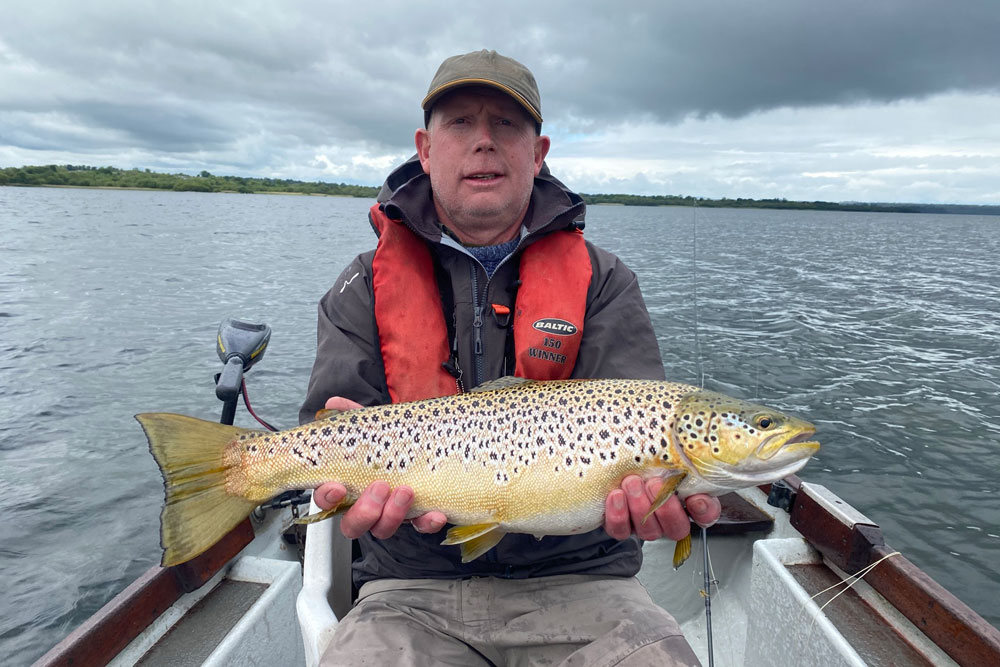
6 Keep Low
When stalking fish, approach low, use any cover you can, like long grass rushes and bushes. If possible, try to keep a low profile, especially on high banks with the skyline behind you. Remember, fish that are deep can see you from farther away than fish that are close to the surface. This is due to how they see – fish have amazing vision. Their ability to see is uniquely adapted to find food and distinguish predators from above, both things that anglers should consider. I also recommend not wearing bright or vivid fishing clothing – try to blend into your surroundings.
7 Stay Safe
I could list so many things here, most are common sense. Make sure you wear glasses or sunglasses and a hat to protect your eyes. Decent quality polarised sunglasses also help with spotting fish and most importantly help me when I’m wading spotting rocks, deep holes, drop-offs and underwater structure. I remember some years ago while hosting and guiding a trip to fish the Trysil river, which lies about three hours comfortable drive north-east from Norway’s capitol Oslo, close to the Swedish border in vast wilderness areas and a place I adore. We were experiencing sunny conditions when one of our regular rods, Peter Bass, who was not wearing sunglasses, had waded to a spot on this massive river. Then, when he wanted to wade back to the bank, he could not see the underwater structure because of the glare on the water. I helped him back to the bank, my sunglasses cut through the glare of the sun reflecting on the water and I could see obstacles like sunken logs, rocks and deep holes. Always be careful wading – I cannot stress that enough, and I only wade if I need to. I see many anglers wading unnecessary on small rivers. Always use a wading belt – it may save your life someday.
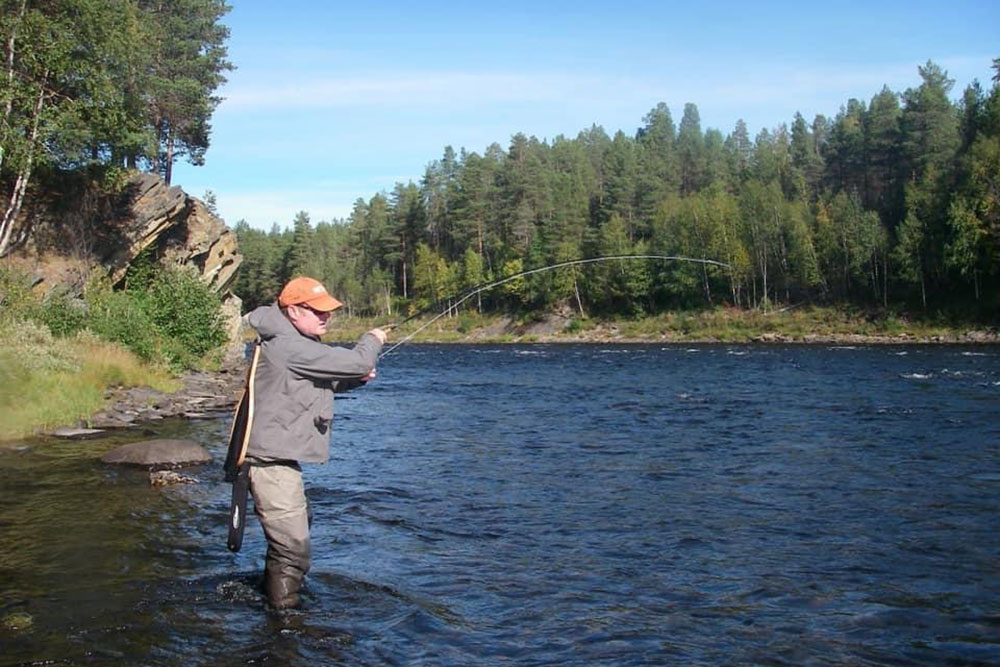
8 Reading the Water
Always sit and take your time and watch what is going on, to see what is happening. Reading water is easy once you start knowing what to look for, think what trout like good cover, which can be an overhanging tree, a stump an undercut bank, a rock where the current changes, a bolthole for safety. One thing to keep in mind, Trout foodstuff tends to gather along seams mostly caused by a difference in the current, so remember to fish the bubble lines. Most trout hold in or next to these seams where slower water meets faster water, which makes food lanes. The best trout will hold where they can get the most food with the least effort, so watch the seams and present your flies in these areas.
9 Fly Selection
Fly selection, Size, shape, materials, which flies are essential?
Size and shape, I think, are the most important when matching the hatch. I have many favourite patterns for rivers and loughs. I like traditional flies as they are steeped in fly fishing history and I like reading about old flies, sorry if that is a bit nerdy, but it is something I like doing. Furthermore, I enjoy fishing patterns my father at times used and to be honest, a Greenwell is hard to beat wet or dry in an Olive hatch. I love many of the modern patterns also if they are fishing flies, as some flies are sometimes tied to catch the angler, and we all have normally too many in our boxes. If you are a fly tyer, it’s a tremendous asset if you can dress a representation of what the trout are feeding on and sometimes even come up with a variant of a fly pattern that will be successful for you.
I hope these tips help you enjoy your fishing. Tight lines.

